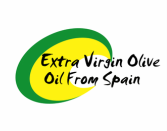the different types of olive oil

Types of Olive Oil
Not all Olive Oil is the same.
There are many misconceptions and misunderstanding regards Olive Oil. The different grades of Olive Oil and associated standards are defined by the International Olive Council.
In summary there are five different types of Olive Oil:
1. Extra Virgin Olive Oil
2. Virgin Olive Oil
3. Refined Olive Oil
4. Olive Pomace Oil
5. Lampante Oil
Not all Olive Oil is the same.
There are many misconceptions and misunderstanding regards Olive Oil. The different grades of Olive Oil and associated standards are defined by the International Olive Council.
In summary there are five different types of Olive Oil:
1. Extra Virgin Olive Oil
2. Virgin Olive Oil
3. Refined Olive Oil
4. Olive Pomace Oil
5. Lampante Oil
1. Extra Virgin Olive Oil - This is the best Olive Oil and the only type we sell
The definition of Extra Virgin Olive Oil is very precise regards production methods, taste and chemical composition. To be certified for the “Extra Virgin” Label, an olive oil:
1. Must come from the first pressing of fresh olives, normally within 24 hours of harvesting.
2. Must be extracted by non chemical, mechanical means, and without the use of excessive heat, specifically below 28C.
3. The free fatty acid or acidity level must be less than 0.8%.
4. It must be defect free – having a perfect taste and aroma.
Extra Virgin is the highest grade and best tasting Olive Oil.
2. Virgin Olive Oil
Virgin Olive Oil also comes from the first pressing and must have an acidity level of less than 2% therefore it is of inferior quality to Extra Virgin Olive Oil. It’s flavour intensity can vary and its taste is milder than Extra Virgin Olive Oil.
3. Refined Olive Oil
These are Olive Oils that have been refined by using agents such as acids, alkalis, and heat to extract as much oil as possible from the olive pulp that remains after the first pressing. The result is a fattier and more acidic oil which lacks taste, aroma and natural antioxidants. This is why producers need to add unrefined Extra Virgin or Virgin Olive Oil to impart some of flavour, colour and aroma into the blend.
Terms such as “pure” or “100% pure” or “Light” are made up terms used by large producers and supermarkets. If the label states “pure” or “100% pure” or “Light” then the Olive Oil is a refined oil lacking the taste, aroma and quality of Extra Virgin Olive Oil.
4. Olive – Pomace Oil
The lowest grade of olive oil made from the byproducts of extra virgin olive oil production. Olive skins, seeds and pulp are heated and the remaining oil is extracted using hexane, a solvent. The result, pomace oil, is then put through the refining process, similar to pure or light olive oil. Pomace olive oil is bland and extremely low in antioxidants.
5. Lampante Oil
Oil with severe defects, usually from bad fruit or poor processing practices. It is not fit for human consumption until it has been refined.Oil with severe defects, usually from bad fruit or poor processing practices. It is not fit for human consumption until it has been refined.
The definition of Extra Virgin Olive Oil is very precise regards production methods, taste and chemical composition. To be certified for the “Extra Virgin” Label, an olive oil:
1. Must come from the first pressing of fresh olives, normally within 24 hours of harvesting.
2. Must be extracted by non chemical, mechanical means, and without the use of excessive heat, specifically below 28C.
3. The free fatty acid or acidity level must be less than 0.8%.
4. It must be defect free – having a perfect taste and aroma.
Extra Virgin is the highest grade and best tasting Olive Oil.
2. Virgin Olive Oil
Virgin Olive Oil also comes from the first pressing and must have an acidity level of less than 2% therefore it is of inferior quality to Extra Virgin Olive Oil. It’s flavour intensity can vary and its taste is milder than Extra Virgin Olive Oil.
3. Refined Olive Oil
These are Olive Oils that have been refined by using agents such as acids, alkalis, and heat to extract as much oil as possible from the olive pulp that remains after the first pressing. The result is a fattier and more acidic oil which lacks taste, aroma and natural antioxidants. This is why producers need to add unrefined Extra Virgin or Virgin Olive Oil to impart some of flavour, colour and aroma into the blend.
Terms such as “pure” or “100% pure” or “Light” are made up terms used by large producers and supermarkets. If the label states “pure” or “100% pure” or “Light” then the Olive Oil is a refined oil lacking the taste, aroma and quality of Extra Virgin Olive Oil.
4. Olive – Pomace Oil
The lowest grade of olive oil made from the byproducts of extra virgin olive oil production. Olive skins, seeds and pulp are heated and the remaining oil is extracted using hexane, a solvent. The result, pomace oil, is then put through the refining process, similar to pure or light olive oil. Pomace olive oil is bland and extremely low in antioxidants.
5. Lampante Oil
Oil with severe defects, usually from bad fruit or poor processing practices. It is not fit for human consumption until it has been refined.Oil with severe defects, usually from bad fruit or poor processing practices. It is not fit for human consumption until it has been refined.
